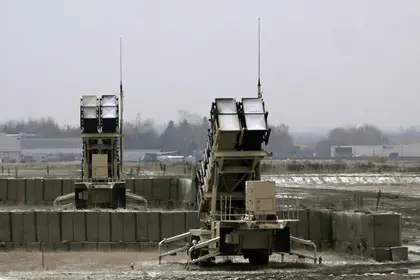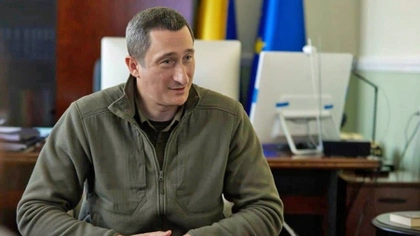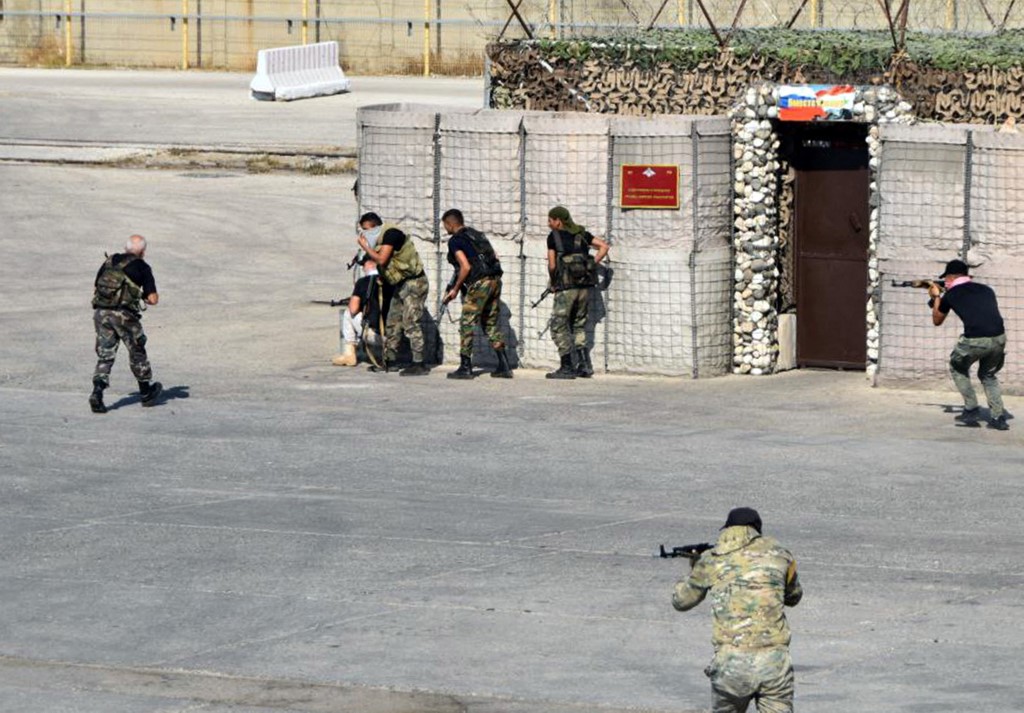A robot plane in mass production in Russia and widely used in air strikes against Ukrainian homes and businesses is manufactured and flown in combat thanks to electronics imported from the China, Taiwan, Switzerland and even the United States, Ukrainian military intelligence said on Tuesday.
Manufacturers contributing key electronic components to the Russian Parodiya robot plane (Пародия/Parody) include China’s Ebyte, Jiashan Jinchang Electron and Yangzhou Yangjie Electronic Technology; America’s Texas Instruments, Cypress Semiconductor, and InvenSense; Switzerland’s STMicroelectronics, and Taiwan’s SONiX Technology, a Nov. 11 statement from Ukraine’s Military Intelligence Directorate (HUR) said.
JOIN US ON TELEGRAM
Follow our coverage of the war on the @Kyivpost_official.
The Ukrainian military analysis group Defense Express on Nov. 11 reported the components are off-the-shelf, and neither the components nor the manufacturers are sanctioned. Most components are used to construct the flight controller, and all electronics needed to build a Parodiya and put it into operation cost no more than $200 per aircraft and possibly less, the report said.
Images published by Ukraine’s Ministry of Internal Affairs showed a no-frills plane made of simple materials. Defense Express reported that the aircraft is largely constructed out of plywood.
The Parodiya drone’s primary mission is to spoof more expensive strike drones already launched in the thousands against Ukraine by Russian strike planners, military analysts said.

Kyiv Calls on NATO for 20 Advanced Air Defense Systems to Defend Power Grid
The lethal, explosives-toting Shahed drone, which the Parodiya is designed to spoof on radar, costs Russian taxpayers about $50-80,000 each, according to details of arms deals published by the Kremlin and Iran.

The Shahed is a flying wing design using a relatively sophisticated guidance system and modern carbon-fiber construction. According to Ukrainian government statements more than 8,000 Shahed drones – each carrying a 50-75-kg explosive warhead – have been launched at Ukrainian homes, businesses or infrastructure since Russia invaded Ukraine in February 2022.
Both Iranian-manufactured Shaheds and those produced in Russia under license have been used in the strikes. As Russia’s drone and missile bombardment of Ukraine has progressed, Shahed drones have been fitted with specialized-use warheads designed to increase casualties, demolish power grid infrastructure, or touch off a more powerful explosion inside a building.
The plane-shaped, stubby-winged Parodiya, which reportedly first reached the field in early 2024, is built of cheap components and contains a primitive guidance system, making it a throwaway aircraft costing a fraction of the price of the Shahed strike drone it is designed to fake, Defense Express reported.
The key internal feature of the Parodiya drone is a 3D-printed reflector built into the fuselage that makes it look like a lethal Shahed on radar screens, the report said. The reflector is a metallic, multi-faced sphere commonly called a Luneburg Sphere.
Images of recovered aircraft published by HUR showed a damaged Parodiya and a pair of Luneburg spheres inside the drone. On November 10 one Parodiya flew into Moldova and crashed almost intact into a farm field next to a village. Images of that aircraft matched the Parodiya drones made public by the Ukrainian military.
Russian milbloggers following the Ukrainian announcement acknowledged the aircraft was in wide use and that at least one-third of drone swarms launched by Russia against Ukraine almost nightly, are Parodiya drones intended to misdirect Ukrainian defenses. Defense Express estimated the figure might be as high as every second drone launched at Ukraine.
Russia overnight on Saturday into Sunday launched the biggest drone strike of the war so far into Ukrainian air space, sending at least 145 attack and distraction drones toward targets across the country.
Ukraine’s air force claimed 62 drones were shot down, while 67 were “lost.” Ten more drones returned to Russian air space, or flew into Belarus and Moldova, an official statement said.
German-born scientist Rudolf Luneburg, who emigrated to the US in 1935 and taught mathematics and optics at Dartmouth College, is considered to have discovered the use of a multi-faceted sphere made of layered, metallic materials as a radar reflector, potentially making it possible for one aircraft to appear like a different one on a radar screen. He discovered the effect in 1944, during heavy air bombardment of Germany during World War II.
You can also highlight the text and press Ctrl + Enter






